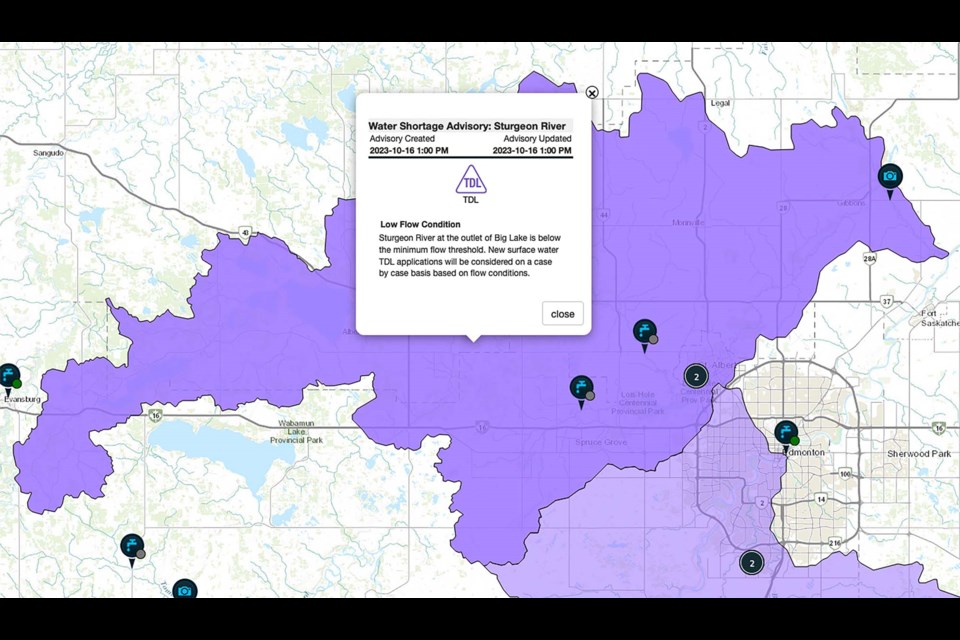Low flow levels could result in more dead fish in the Sturgeon River this winter, says a St. Albert environmental co-ordinator.
The Sturgeon River has been under a water shortage advisory since October 16, the Alberta River Basins website shows.
Alberta Environment implemented the advisory because flows had dropped below the minimum level needed to support all licensed water withdrawals from the Sturgeon, said spokesperson Jason Penner in an email. Any new temporary diversion licenses will now be considered only on a case-by-case basis. Existing license holders should check their licenses to see if they have any low-flow restrictions on them.
City of St. Albert environment co-ordinator Melissa Logan said this was the first time in years she could recall seeing a low-flow advisory on the Sturgeon, adding that it could mean less oxygen for fish and more dead fish this winter.
“It will have an impact on fish populations for sure,” she said.
It’s been dry
Water levels in the Sturgeon have declined over the last century due in part to land use changes (particularly the destruction of 70 per cent of the watershed’s wetlands) and global heating, reports the North Saskatchewan Watershed Alliance (NSWA). One 2016 study by the NSWA found that average flows in the Sturgeon in October were about half of what they were now (specifically from 1991 to 2011) than they were from 1914 to 1990.
While low flows in the Sturgeon aren’t uncommon, low-flow advisories are kind of rare, said Kelsie Norton, watershed planning co-ordinator with the North Saskatchewan Watershed Alliance. Low flows mean less water and oxygen for fish in the river, and greater odds of winter fish kills.
This fall’s low flows were likely weather related, said Miles Constable of the Big Lake Environment Support Society. As the Sturgeon has no glaciers, it relies entirely on rain and snow for flow. The Sturgeon went through a dry spring and is now in a dry fall, with Alberta Agriculture reporting that about half of Sturgeon County was the driest it had been in 50 years in terms of accumulated precipitation as of Nov. 15.
“If we don’t have snowpack and we don’t have rainfall, we don’t have flow,” Constable said.
Although farms and businesses do take water from the Sturgeon, Constable said research suggests those withdrawals are not a huge factor in the river’s flow rate.
The NSWA reports that some 13 per cent of the surface and groundwater in the Sturgeon is licensed for human use. Much of that use happens in the summer, which could stress life in the river, as the water typically has less water at that time.
Riverbank solutions
The Sturgeon and Vermilion rivers are the most important contributors to flow in the North Saskatchewan River downstream of Edmonton, Norton said. As about 1.5 million people depend on that river for water, that makes low flows in the Sturgeon a concern.
Norton encouraged Sturgeon watershed residents to practice water conservation and to preserve wetlands, as wetlands act as buffers against floods and droughts.
“People need to be stewards of their own land.”
Constable said reducing greenhouse gas emissions could also help.
“The more we switch to renewable forms of energy, the better we will be.”
Alberta had 51 water shortage advisories in place as of Nov. 21. For details, visit rivers.alberta.ca.




